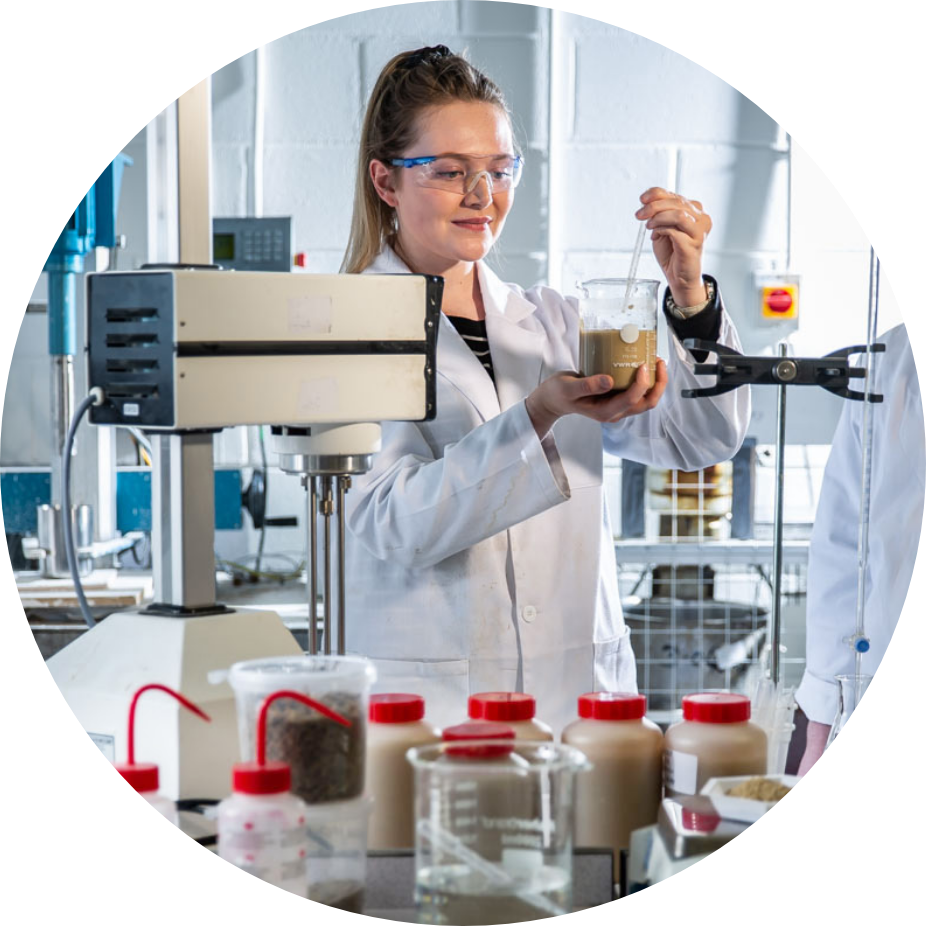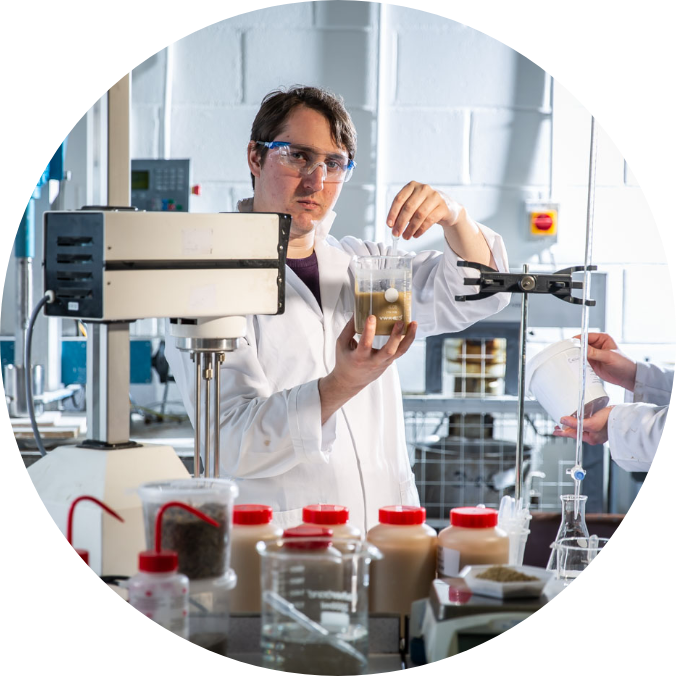
Cellucomp
Circular chemistry
Scottish company CelluComp develops sustainable materials by extracting nanocellulose fibres from root vegetables. In short – they turn waste into a new resource, without compromising performance. Primarily using sugar beet pulp, CelluComp created a material they named Curran.® It’s innovative. It’s highly effective. And it’s circular economy-friendly.
How did Cellucomp come about?
“All plants have living cellulose in them,” explains Founder and Head of Technology, Dr Eric Whale. “If you can use the properties and get them out, you potentially have a renewable, high performance material. That’s where we started.”

Women in white lab coat, wearing protective eye wear, holding a beaker and string contents with glass tube. Standing in a lab, surrounded by scientific equipment and materials
Long before the circular economy was a commonly discussed idea, Cellucomp were looking into resource recovery. Eric and fellow founder Dr David Hepworth started thinking about where they could source cellulose from. What sort of waste products could they utilise? “The circular business model has been at the core. We’ve always tried to take waste or co-product streams and help move them up the value chain,” says Eric.
Zero Waste Scotland put CelluComp in touch with a relevant supplier, who helped them at a project level.
“They helped us rethink things – for example, we’ve got a lot of data, but how do we take that to a larger scale? What does larger scale look like? And what is the anticipated cost of larger scale?”
“We worked on energy balance, concept. It helped us get things updated and moving.”
Why did you decide to use vegetables?
Paper from wood may seem like an obvious choice – but as the process of breaking it down is quite heavy, it wasn’t the most energy-efficient way to go. Plus, there’s not as much waste pulp from paper as there once was due to declining print-based businesses.
Vegetables, on the other hand, were a rich area. “From the farming chain right up to the consumer – waste products [are created] from vegetable processing,” says Eric.
Think wonky vegetables that get left behind. Vegetables chopped incorrectly on the production line. Or even vegetables that might have fallen onto the factory floor. “We knew there was a supply there,” Eric continues, “so there was logic in what we were doing.”
How did you get the ball rolling?
Testing. And lots of it. “We started looking at bio-composites,” says Eric. “Could we take this source of material, extract the components we wanted, and then actually get something useful out of it? Did the materials have the performance characteristics required?”
First came carrots, but as they’re composed of up to 90% water, they weren’t ideal from a preservation perspective. Sugar beet was a more practical choice. As a by-product of the sugar industry, around seven million tonnes of the stuff is produced every year in Europe alone. “Using sugar beet uses less energy than making nanocellulose from something like wood,” explains Eric. “The idea is to save energy, and save on production costs. The idea is to create a cost-effective material.”
Aside from cutting costs, what are some of the other benefits of a circular model?
“There are a range of benefits,” says Eric. “They could be social benefits, or brand benefits… but it’s also about sustainability, long-term.”
And when it comes to shifting to a circular model, focusing on the benefits is a great place to start. The circular landscape is vast, so think big. “Whatever you’re doing – you need to give a benefit,” continues Eric. “That benefit might be for yourself, it might be reduced waste, or reusing things – anything from manufacturing to services.”
And what impact has your circular model had on your product?
For Cellucomp, high performance has always been key. Curran® is versatile. It can be used in anything from paints and coatings to shampoo and laundry detergent. Crucially, its fibres are strong. Throughout the development process, there was a focus on creating an exceptional product – because consumers need something that will perform. “If you’re going to make a change [to your product] ideally, the end consumer shouldn’t notice,” says Eric. “The technical performance should be the same, if not better.”

